#television history
Photo

page from the November 2000 “Sexiest Man Alive” issue of People magazine
#malcolm in the middle#hal#bryan cranston#television history#fox televison#sitcom#season premiere#sexiest man alive#people magazine
10K notes
·
View notes
Text



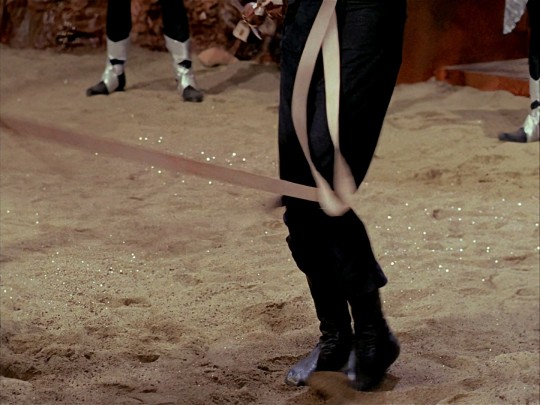

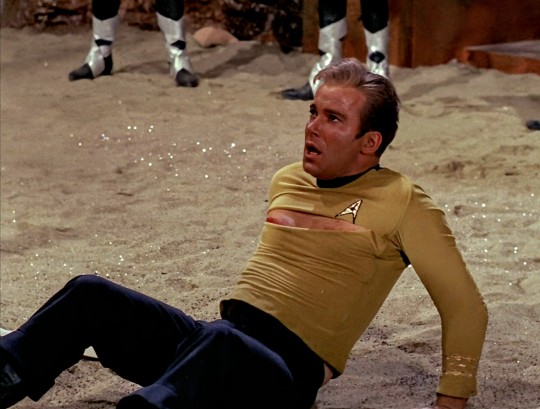
"The ahn woon!"
S2E1: Amok Time ⋆.˚ ✧ · ˚⊹ ·
#the last frame makes me feel... a lot#spirk#star trek#spock#star trek tos#captain kirk#the original series#vulcan#pon farr#amok time#screencaps#my edit#television history#1960s#slash#fandom#william shatner#leonard nimoy
235 notes
·
View notes
Text
Cosplay the Classics: Elizabeth Montgomery in “Two”
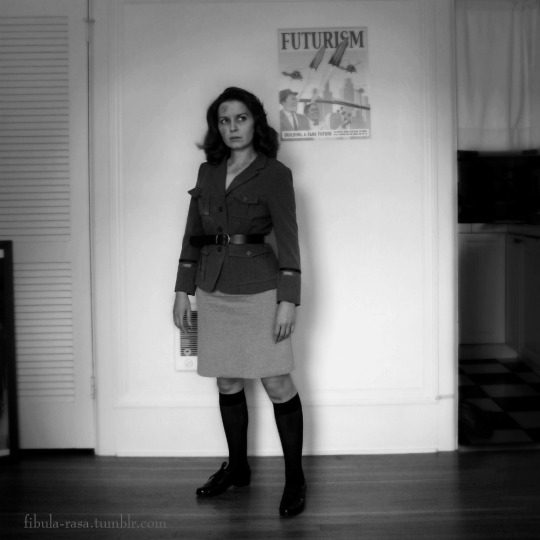
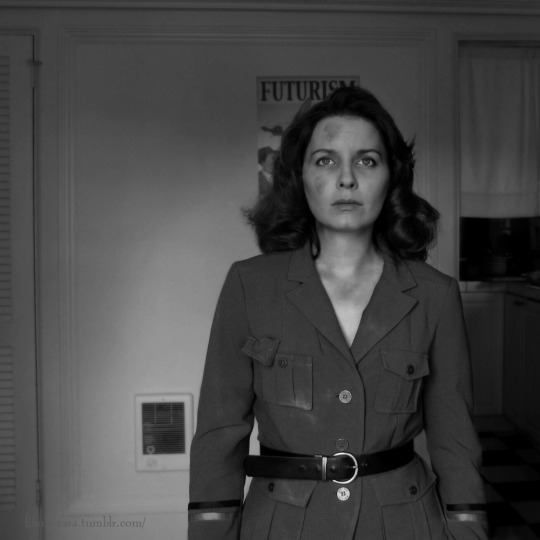

“Two” first aired on 15 September 1961 and is the first episode of the third season of The Twilight Zone. Sadly, “Two” is the only episode that features Elizabeth Montgomery.
Montgomery was nearly ten years into her professional career in 1961. She had already carved out a solid resume in television, appearing prolifically on anthology and episodic shows and occasionally stretched her legs on the New York stage. Samantha Stephens was still three years away when Montgomery took her voyage through The Twilight Zone.
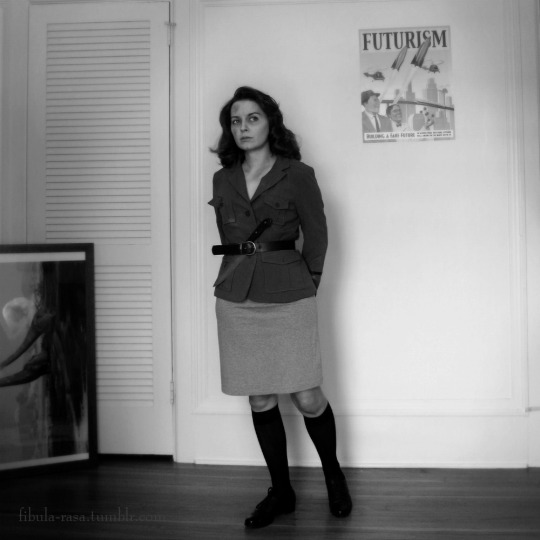

In its five seasons, The Twilight Zone was a crossroads of up-and-coming and well-established performers. “Two” paired the rising star Montgomery with Charles Bronson, who had a decade more acting experience in TV and film than Montgomery. Though Bronson was the more established star, “Two” is Montgomery’s showcase.

Read on below the jump!
“Two” relies on minimal dialogue throughout and notably Montgomery only has a single line spoken. The role relies almost entirely on Montgomery’s action/reaction, expression, and styling. The episode begins on Montgomery as The Woman wandering an abandoned city. The first nine minutes of the episode pass with no dialogue, with context given by visual elements and Serling’s opening narration. The entire episode takes place on a small section of city street (at the old Hal Roach studios, conveniently already in disrepair).
We learn through newspapers and magazines that this city is in The Man’s homeland, invaded by The Woman’s nation’s army. Signs of the city’s long five-year abandonment are everywhere, including full skeletons left where they fell. (The macabre element of skeletons is used sparingly across the Twilight Zone and usually in circumstances less grounded in reality than “Two,” such as “Long Live Walter Jameson” and “Queen of the Nile.”) As The Man mulls over his first encounter with The Woman a dove flies up behind him as a symbol of his genuine desire for peace. Through a variety of posters and advertisements, we learn that The Man’s homeland had a culture heavily invested in war.
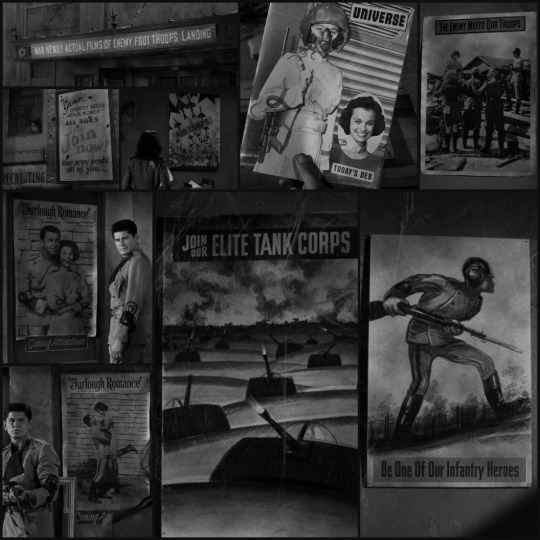
Collage of the war-related paraphernalia in “Two”
All of that is solid storytelling, but Montgomery’s acting adds an extra something. When The Woman first encounters The Man, Montgomery performs hair-trigger reactivity. Despite The Woman’s dire situation—a stranded foreigner in a decimated country with seemingly no chance to ever return home—her reluctance to trust The Man is significant. Pairing Montgomery’s wordless portrayal of these responses with the jingoistic quality of The Man’s homeland and the notable length of time that the city has been abandoned makes me feel that her feelings might not be a simple holdover of wartime hostility on her part but potentially extended trauma. Perhaps The Woman had previous awful experiences with other straggling remnants of The Man’s military, who may not have been as ready as The Man to give up wartime attitudes in spite of the war clearly being over.
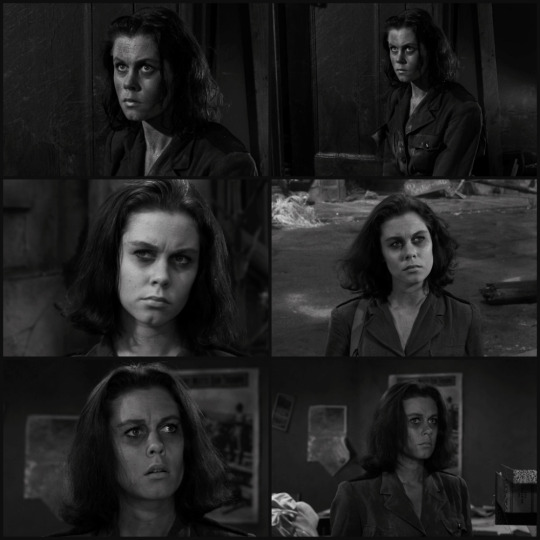
The Woman is understandably acting like a cornered animal. As the episode progresses, The Man tries to be as calculated as possible in communicating to The Woman that he doesn’t want a fight through his actions, turning his back to her, and not retaliating the third time she launches an attack on him. Montgomery, in turn, does a great job of drawing out the cornered animal characterization—alternating between curiosity, hope, mistrust, and open hostility. Montgomery’s characterization gives the role the added dimension that saves the episode from feeling too much like an overly simple fable.
Unfortunately, it’s in executing the fabular aspect of the story where “Two” falters. The opening narration by Serling specifies:
“It’s been five years since a human being walked these streets. This is the first day of the sixth year as man used to measure time.
“The time: perhaps a hundred years from now, or sooner, or perhaps it’s already happened two-million years ago. The place: The signposts are in English so that we may read them more easily, but the place is The Twilight Zone.”
It’s established here that the location is meant to be a stand-in for any city in any country, and that the use of English is merely a storytelling convenience. So, even though “Two” is intended as a Cold-War era anti-war statement, they are intentionally distancing the fiction from the contemporary real-world conflict. To create further distance from a contemporary place/time, they establish that the rifles are laser guns.
But, then, that one line that Montgomery speaks in “Two,” seventeen minutes in, is “Prekrasny” or “прекрасны,” a Russian word for beautiful or pretty. This pretty much grinds to a halt the concept that this is a cautionary fable and not a vision of a dark future where the Soviet Union and the United States moved to open warfare. While I’ll admit that the conventions used to establish “Two” as a fable are cheeky and a little on the corny side, the episode itself would have been stronger without the suggestion that The Woman is Russian.
I’m not sure who made the call to use a Russian word. I wonder if perhaps Serling wrote his introduction and he had a different read on the story than its writer, Montgomery Pittman. Maybe Pittman intended “Two” to be more of a dark premonition with a twist of optimism and Serling thought of it more as a fable and the two approaches hampered each other in the final product? This is pure speculation on my part of course, but it’s a black mark on what I think could have been an even better episode than it is.
Regardless, I think “Two” is a strong episode and a fine example of a Serling-esque story written by someone brought on to lighten the load of Serling, who worked himself to the bone on Twilight Zone. I also appreciate Pittman’s confidence to rely so heavily on visual storytelling techniques, taking into account that the high quality at which we watch the show now does not reflect the quality home viewers would have had in 1961. It reflects both Serling and the producers belief that viewers would be fully engaged in watching the show as it aired rather than just passively having it on in the family room while unwinding after dinner.
Elizabeth Montgomery’s performance heightens the whole affair considerably. That’s no shade on Charles Bronson, in fact I think the monologuing he’s given could have come off as unbearably hokey if delivered by a lesser actor.
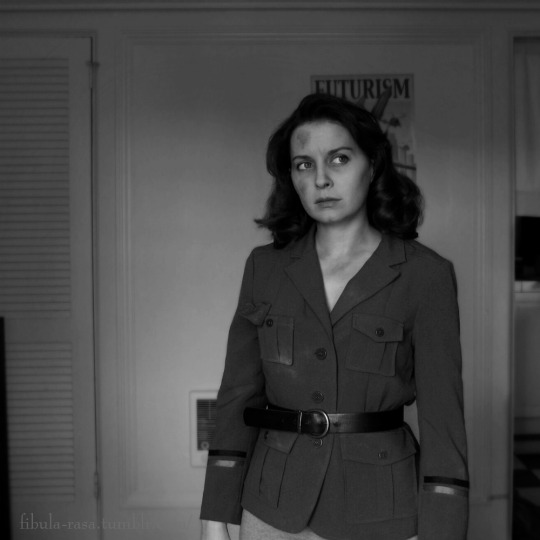

If you can believe it, this is my very first time cosplaying The Twilight Zone! (Though I did play Rod Serling in a set of sketches in high school. I was as weird as a teenager as I am an adult, okay?) If you didn’t already know, I run another blog called Twilight Zone in Close-ups, examining the powerful use of close-up shots on the show by testing out how much of each episode’s story can be communicated solely by its close-up shots.
☕ Buy me a coffee! ☕
#1960s#1961#elizabeth montgomery#the twilight zone#Twilight Zone#rod serling#classic television#television#closet cosplay#cosplay#television history#OTD#science fiction#speculative fiction#horror#1960s tv#tv
183 notes
·
View notes
Text

My one wish for the @ds30below History week is that someone would find this Entertainment Tonight segment, probably from March 1996, where Paul Gross prepares for his role as Ms Fraser and put it online.
This still from the video is from an old post by the wonderful @fuckyeahpaulgross, who sadly appears to have left Tumblr. Maybe they had the video, maybe they only had the screenshots - but someone somewhere must've had it and that gives me hope that it's not lost forever (the stills look like they're photos of a television screen, so the video most likely never was in digital format).
So, dear fellow dS fans, if you know anyone who might have this Holy Grill of dS interviews or know something more about it, please ask them! (Personally, I just contacted Entertainment Tonight about it, hoping they might put it online to celebrate the dS anniversary. Lol, we'll see!)
59 notes
·
View notes
Text
Jenny and the Fuzzy Avengers 1 & 2 (Videos, 1985/1988)
You can watch them here, and you can read an article about them here.
@skinslip @hystpod

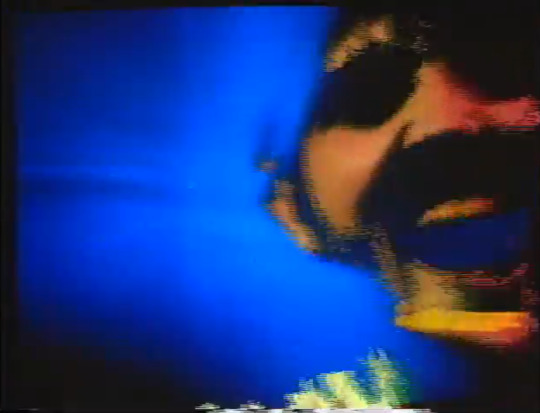

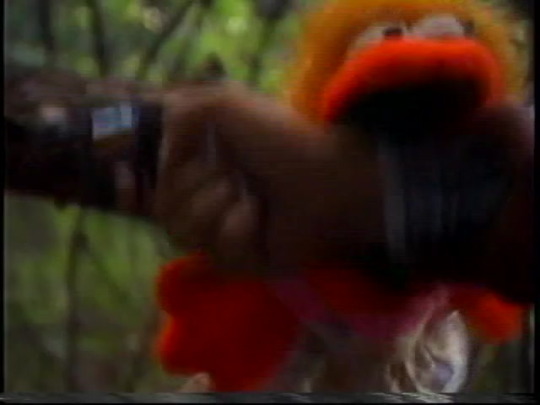
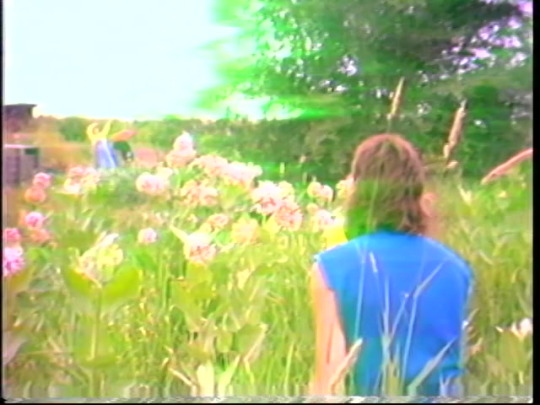
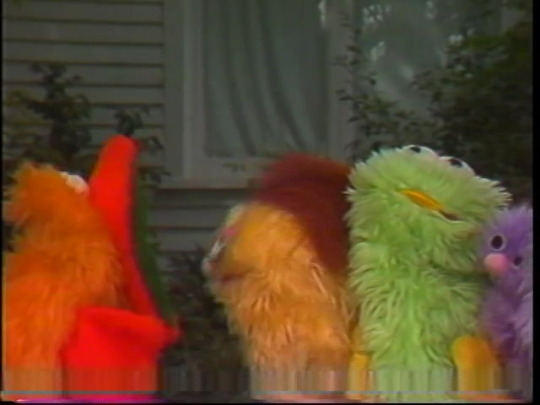
#internet archive#video#videos#weird videos#short film#short films#weird movies#public access#tv history#television history#puppet#puppets#puppetry#yakima#washington#washington state#1985#1988
21 notes
·
View notes
Text

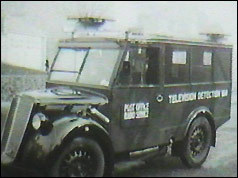
In February 1952, BBC News reported that the latest technology was being harnessed to combat television licence evasion;
"...The first TV detector van was demonstrated in front of Postmaster-General, Lord De La Warr and Assistant Postmaster-General Mr Gammans. The detection equipment was developed at short notice at the radio experimental laboratories of the Post Office in Dollis Hill, London. The units consist of three horizontal loop aerials fixed to the roof of a van which receives signals from TV sets and converts them to radio waves to give audio and video information. Its inventors insist the system is sensitive enough to pick up the vast majority of television receivers, whether the aerial is external or internal..."
The Post Office estimated that there were as many as 150 000 unlicensed television viewers. Lord De La Warr stated that these people were receiving free entertainment subsidised by those who had paid up, but conceded that many had most probably forgotten to acquire or renew their licence. "We are most unwilling to start a snoop campaign or to follow it up by prosecutions."

According to a later BBC report, the BBC itself took over the responsibility for collecting the licence fee from the Home Office in 1991, and although evasion rates halved, by 2002 the National Audit Office estimated that unlicensed viewing was costing the BBC 141 million pounds per year, the equivalent of six quid per licence payer.
#social history#uk politics#working class history#social justice#modern history#british culture#uk government#society#human rights#uk history#television history#entertainment
23 notes
·
View notes
Text

56 notes
·
View notes
Text
The "Rural Purge" of Television
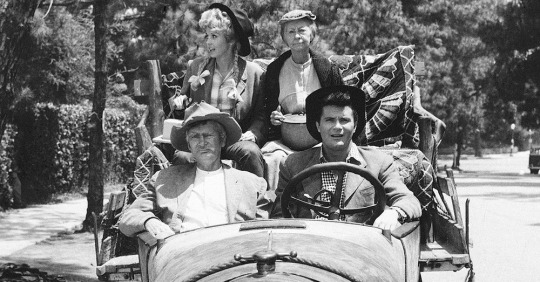
During the early 1970s, American television networks — particularly CBS — noticed a shift in demographics as younger, urban audiences became more desirable to advertisers than the traditional rural and older viewership. This was aligned with a growing desire among television executives for more socially relevant content that reflected contemporary issues.
As a result, a number of highly rated rural-themed shows such as The Beverly Hillbillies, Green Acres and Petticoat Junction were canceled to make way for a changing television landscape, in what came to be known as the rural purge. They were replaced by a new wave of shows such as The Mary Tyler Moore Show, All in the Family and M*A*S*H, which were believed to be more in touch with the modern tastes and preferences of suburban American audiences. Green Acres' actor Pat Buttram famously said of the change: "CBS canceled everything with a tree — including Lassie."
The move drew some conservative outcry (including from then president Richard Nixon), which prompted CBS to release the rural family drama The Waltons, in 1972.
#rural purge#cbs#history#tv#television#television history#vintage television#vintage tv#classic tv#network tv#retro tv#retrotvblr#70s#1970s
6 notes
·
View notes
Text
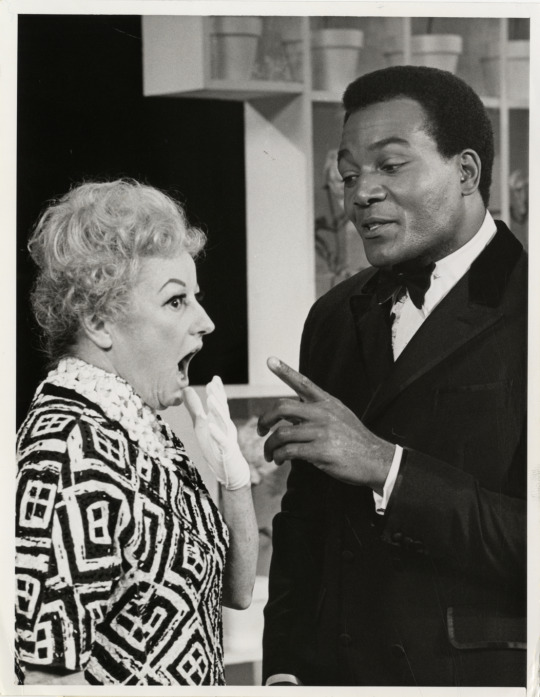
View of actor Jim Brown and Phyllis Diller on "The beautiful Phyllis Diller show." Label on back: "NBC Television. Exclusive to you in your area. Now, now -- Jim Brown, ex-football star with the Cleveland Browns now a successful actor, admonishes Phyllis Diller in a comedy sketch when he guests on "The beautiful Phyllis Diller show" Sunday, Dec. 9 (10-11 p.m. PST & EST; 9-10 p.m. CST) in color on NBC-TV. Phyllis Diller, Jim Brown. The beautiful Phyllis Diller show, Sunday, Dec. 8."
E. Azalia Hackley Collection of African Americans in the Performing Arts, Detroit Public Library
#jim brown#phyllis diller#1970s#seventies#football#nbc#tv#television#television history#tv history#vintage television#detroit public library
50 notes
·
View notes
Note
Hi, I need information about a movie I couldnt find anything on the internet 1967 the purple monster Strike I watched the series there are some pictures form series like you published but l can't see it in the series?

There's a reason those images are not in the serial itself: the Purple Monster Strikes was chopped up and stock footage from it was used in the 1949 serial Radar Men from the Moon. The images from it come from that serial.
Republic Pictures were almost like predecessors to the great Roger Corman, Haim Saban, and the Shaw Brothers in their skinflint tactics straddled the borderline between asshole and creative (though I certainly wouldn't want to work for any of them). For example, Republic Pictures had Roy Barcroft wear the exact same outfit in Radar Men from the Moon, playing a similar villain character in a completely different movie, in the exact same weird space outfit, so that they could cut in footage of him from Purple Monster Strikes to save money and pad out the length of a 12-episode serial. The trouble is that Roy Barcroft gained a bit of weight between 1945 and 1949, so you can always tell which was Purple Monster footage and which wasn't. I think that might have been why they had him sit down behind a desk an awful lot in Radar Men (shades of late period, physically inactive Steven Seagal!)

In the days before repeated viewing on home video, nobody noticed, and the serial creators were counting on the fact the kid audience weren't paying attention too closely, so they could "cheat" quite a bit (as Annie Wilkes screeched out in Misery).

The reason you say it's a 1966 serial is that, for 60s television syndication (which is almost assuredly where the baby boom generation, notably Spielberg and George Lucas, discovered the serials), they were chopped up into movie length in order to cheaply show new material on television. It is stunningly easy to cut a serial like Undersea Kingdom to movie length, since most of their episodes tend to just go back and forth in repetition.
It's actually kind of stunning how much the urge to re-air cheap old material from the 30s and 40s defined the earliest generations of television watchers a decade later in the 60s. For example, most fans of the Three Stooges who discovered them in the 50s-60s fell in love with them because their 30s shorts, designed to be a shown before a feature before television existed, were the perfect length to be packaged as a cheap TV series. Same thing with the Johnny Weismuller Tarzan movies. Notably, "Saturday Morning Cartoons" started off as just a time to cheaply re-air old Warner Brothers shorts (Bugs Bunny, etc).

We like to think that we are the first generation that is "held hostage" to the cultural totems of a past generation, but the first generation of TV viewers were essentially just watching the same thing that their parents were in the 30s and 40s.
The world of 60s television syndication deals is fascinating. It's amazing how NBC once built their entire programming schedule around the fact they got the rights to broadcast James Bond movies.
129 notes
·
View notes
Text

I almost just rolled my eyes at Wasp’s line there. Thinking she was saying “Oh I’d rather be watching my soaps” but NO. NO in fact.
“Julia” is a 1968 American sitcom that was one of the first popular American TV programs to star a woman of color.
https://en.wikipedia.org/wiki/Julia_(American_TV_series)
Even back here in 1968 Marvel was using its heroes “living in the real world” to break new ground by just casually dropping the fact that one of their most prominent heroines was a fan of a TV show that was bold and dangerous just by existing in the time that it did.
This is why I google things when I read them, that detail rocks!
#julia#wasp#goliath#vision#yellowjacket#hank pym#janet van dyne#clint barton#avengers#red skull#johann schmidt#tv#television#television history#marvel#marvel comics#marvel heroes#marvel universe#superhero#comics
60 notes
·
View notes
Text
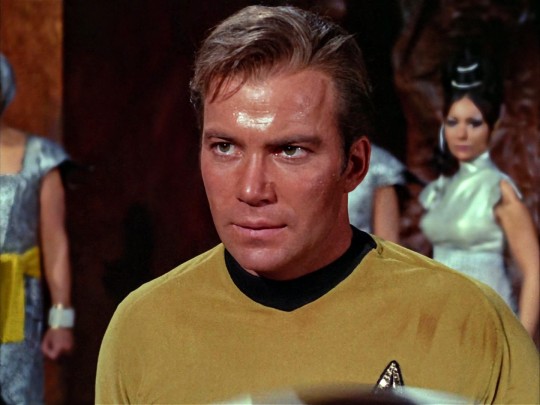
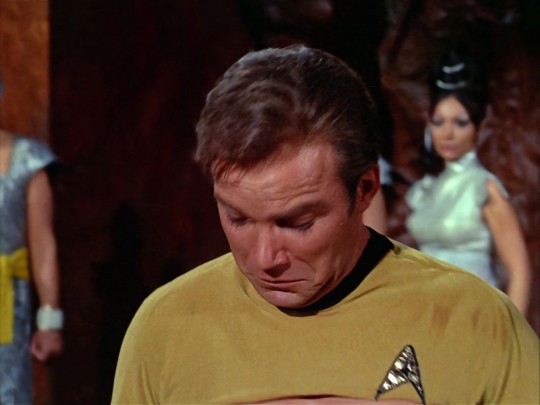
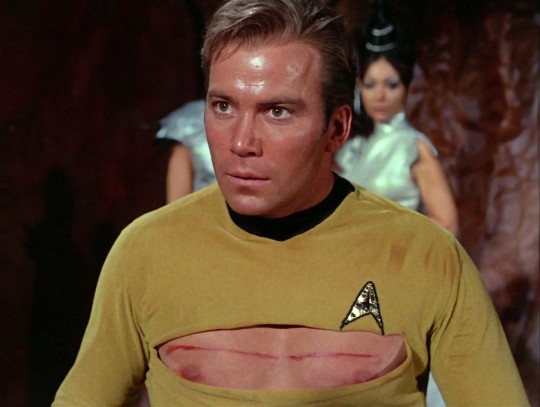
S2E1: Amok Time ⋆.˚ ✧ · ˚⊹ ·
#TIDDIE SHIRT#he's the pikachu meme#ugh sweaty jim save me#television history#amok time#pon farr#spock#captain kirk#william shatner#leonard nimoy#vulcan#star trek#fandom#classic#1960s#my edit#screencaps#iconic
251 notes
·
View notes
Text



S04E09 - Grandma Sues
Powerful ire. Heed his glare.
Costume Design: Heidi Kaczenski
#bryan cranston#dadcore#malcom in the middle#sitcom#television history#wardrobe department#tv sitcom#breaking bad#00s fashion
9 notes
·
View notes
Text
The Formula That Shaped Cable TV 📺
So, I do this thing where I publish a shorter version of Tedium on different outlets like Substack and LinkedIn. I call it Lesser Tedium, and I’m going to try it here. If you like it, subscribe to Tedium here. If you think it sucks, leave an angry comment, so I feel the depth of your anger.

A forgotten TV show from the late ’80s played a massive influence on how cable television was made—so much so that the formula it spawned is better known than the show.
In the midst of the recent Writers Guild of America strike, a lot has been said about the ways that writers are paid, particularly how the rules often end up being quite confusing.
But even when the rules work out, they can be weird as heck. My case in point: The weird case of what happened to the late-’80s show Sanchez of Bel Air.
This show, which aired during the fall of 1986, was a bit of a forgotten unicorn at the time of its release. Airing on the USA Network, the show had a lot in common with a later Bel Air-based television show, Fresh Prince of Bel-Air, albeit focusing on an upwardly mobile Latino family rather than a black one. It was a sitcom when cable television was not known for airing sitcoms.
youtube
The show aired on USA at a time when representation, especially positive representation, of Latinos on television was quite limited, and the show did receive criticism for not being particularly authentic. (One potential reason for this: While its cast—with the notable exception of Bobby Sherman, for some reason—was largely Latino, its creators, Dave Hackel and April Kelly, were white.)
The show was not a hit, and disappeared after just 13 episodes. But because it appeared so early in the history of cable television, it became a bit of an unexpected landmark for completely behind-the-scenes reasons.
See, as a part of the show’s creation as one of the first sitcoms explicitly produced for the medium, it led to the development of a residual agreement about how much writers received upon re-airings of the show. The current formula breaks down as such: For the second to fifth re-airings, writers get 50 percent residuals, then it shrinks down to 6 percent on the sixth re-airing and 4 for each of the 7th and 8th re-airings. Gradually, the scale slides down until the 13th re-airing, when every future replay gets 1.5 percent each.
This formula, crazy as it sounds, is better known than Sanchez of Bel Air. It’s called the Sanchez Formula, and is generally used for scripted shows that air on cable television.
In many ways, emerging technologies shift the game for writer compensation—and the current Writers Guild of America strike highlights how, when these rates fall out of sync with the work being created, it can create serious problems. While the Sanchez formula wasn’t perfect, it worked well enough that it has stuck around for nearly 40 years.
» Wanna learn more? Check out my 2018 piece “TV’s Hidden Math,” which explains why so many shows have 13 or 65 episodes—especially if they’re syndicated.
17 notes
·
View notes
Text
3-2-1 Contact (Videos, 1980-1989)
The science series from the Children’s Television Workshop, later the Sesame Workshop. You can watch various episodes of the show here and here.
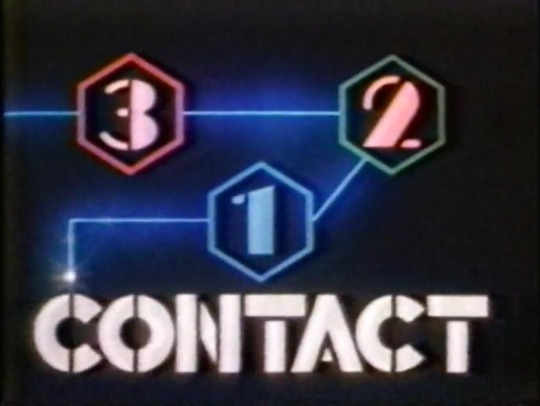
#internet archive#video#videos#kids show#kid's show#kids shows#kids tv#childrens tv#children's tv#children's television#tv#television#tv history#television history#old tv#1980s tv#1980s television#80s tv#80s television#80's tv#sesame workshop#1980s#80s
11 notes
·
View notes
Text


On May 17th, 1955, during what was described as a generally lacklustre and even boring general election campaign, ‘the lull before the lull’, Prime Minister Anthony Eden did something dramatic and revolutionary…He went on the telly.
The BBC reported;
"…The Prime Minister, Sir Anthony Eden, has hosted a ground-breaking half-hour television election programme for the Conservative Party, pitting government ministers against newspaper editors in the first broadcast of its kind. Sir Anthony was flanked by four ministers; the Chancellor, Rab Butler, the Foreign Secretary, Harold Macmillan, the Health Minister, Iain Macleod, and the Minister of Labour, Sir Walter Monckton. Facing them were the editors of 10 major national newspapers, armed with questions said to reflect the concerns of the country…"
In a stark indication of how the tone of political debate has since changed, the BBC reported on a ‘challenging’ line of questioning from the editor of The Daily Mirror, Hugh Cudlipp;
"…At one point, he asked the Prime Minister to respond to what he called the common impression that Sir Anthony was ‘less well versed in home than in foreign affairs’. Sir Anthony, with a smile, admitted that it was 'a perfectly fair criticism’, but reminded Mr Cudlipp that his post as Foreign Secretary had led him to sit in Cabinet for 20 years - and the Cabinet, he said, dealt with domestic as well as foreign affairs. Indeed, he added, he had contributed 'more than somewhat’ on domestic affairs…"
Following the televised campaign in 1955, which reached one third of the population, the Conservatives increased their majority from 17 in 1951, to 60, with their manifesto slogan, 'United for Peace and Progress’.
In another indication that politics was slightly different in those days, Eden said this in the House of Commons;
"...The Rt Hon Gentleman, the Leader of the Opposition, and others have been kind in their welcome to me...I can only say to the Rt Hon Gentleman and to the Father of the House, too, that I have been deeply touched by what has been said this afternoon and that, for my part, I will do all I can to serve our country..."
But as much as television might have boosted Eden’s political fortunes in 1955, it helped to drive his demise less than two years later.
"…By the time of the Suez crisis, in 1956, a new line of confrontational questioning by television interviewers such as Robin Day meant Sir Anthony no longer had the freedom of the airwaves to say what he wished unchallenged. As the crisis turned against him, he withdrew from the cameras, appearing just twice in four months. After his resignation in 1957, he said he was convinced that television had contributed to his downfall…"
#social history#uk politics#modern history#uk government#anthony eden#media#television history#party political#uk history#suez#BBC television#society#democracy#politicians
19 notes
·
View notes